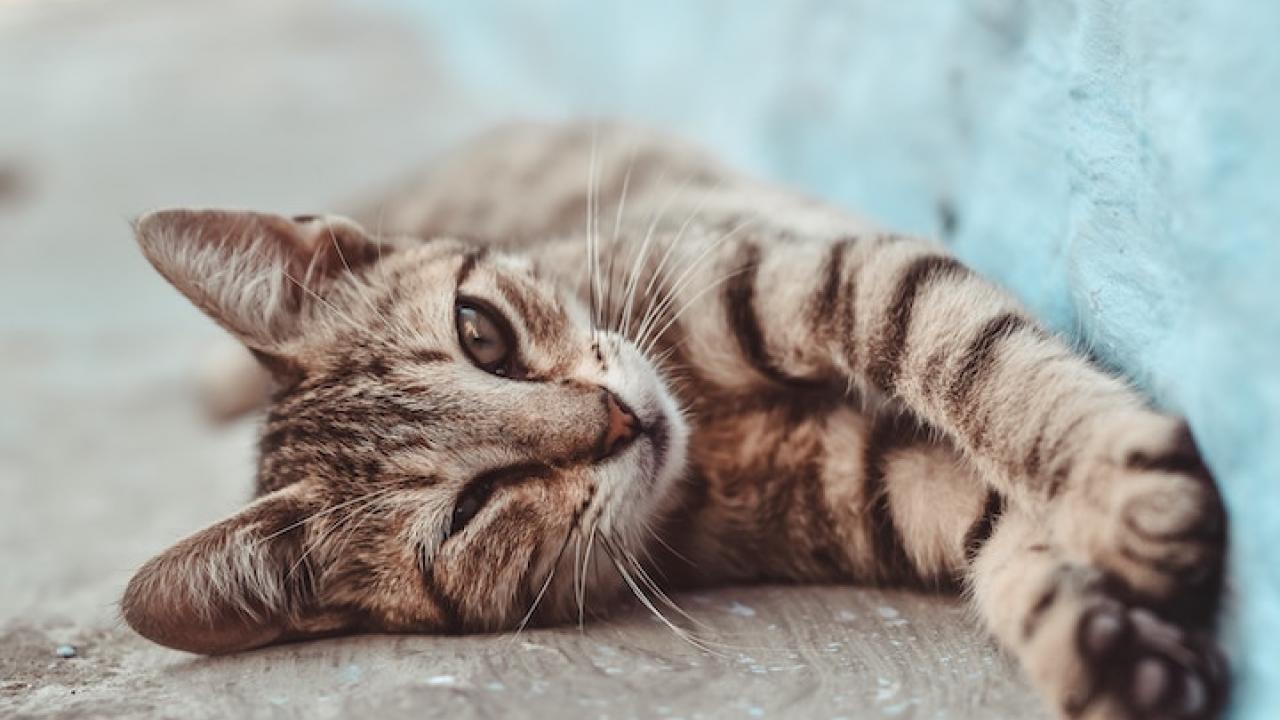
Kitten Play: Managing Rough Play
Kitten Play: Managing Rough Play
How we can help
Call 530-752-1393 to schedule an appointment with the Behavior Service.
Download PDF of this "Kitten Play: Managing Rough Play" article
Owners enjoy playing with their new kitten, and this play can be a fun way for you and your kitten to bond. However, what you may think is normal play may actually be a sign of aggression, fear or medical problems. Therefore, any excessive rough play should be brought to the attention of your veterinarian.
What is Rough Play?
This often occurs from the cat learning inappropriate ways to play with people. It may start out innocent, with an owner using her fingers to play with a kitten. When a kitten is young, the bites and scratches don’t hurt. However, as the kitten gets older, the bites begin to hurt.
Distinguishing Play from Other Behavior
Play Aggression:
Play aggression is typically seen in kittens and young cats. The target is often a moving object, which can include a person’s hand or foot. The cat often swats, pounces, chases and leaps on the target without any vocalization. Its posture and behavioral expression is neutral.
This play is normal but becomes a problem when it is too rough, for example if the cat does not retract its claws or if the biting is uninhibited, or when it is directed towards weaker, older, or ill cats in the household. Between 3 weeks of age and 7 weeks of age, known as the socialization period, a kitten learns about the world and its place in it. This includes learning self-control in the form of bite inhibition and claw sheathing from their mothers and littermates. However, your kitten may not have learned this self- control (especially if raised as an orphan kitten, is the only cat in the household, or is alone most of the day).
Offensive Aggression:
There are many types of feline offensive aggression: intermale, territorial, predation, petting-evoked, status and redirected.
Offensive aggression can be differentiated from play or defensive aggression by the cat’s posture, facial expression, vocalization, gender, age, and the context of the aggression. Generally their posture is one of confidence. They may also growl, hiss or spit.
Defensive Aggression:
Fear and anxiety are the main causes for defensive aggression. Unlike offensive aggression, the cat’s body is lower to the ground indicating fear. The cat may also hiss or spit.
Medical Aggression:
There are also medical reasons for increased aggression in cats such as pain, anxiety, drugs and neurologic disorders. If you observe any changes in your cat’s behavior, if your cat seems to react painfully when touched in a specific area, or if your cat is exhibiting any other medical symptoms, please contact your veterinarian.
Aggressive play is most easily corrected when the cat is young. Listed below are some ways you can correct your kitten’s rough play.
Treatment Do’s
-
Provide appropriate toys such as feathers on a string, toy mice, balls that you roll on the floor, or rolled up paper. Rotate a variety of toys to find your kitten’s preference and maintain your kitten’s interest.
-
Interrupt the inappropriate play with attention to an appropriate toy, such as wadded up paper or a wand-type toy.
-
Provide a play companion for your kitten (of the same size and temperament). Note: this step should only be taken if you are willing and able to provide for another cat. Be advised that these cats may not get along, especially in the beginning.
-
Appropriately handle kittens often and early, especially during the socialization period. Studies have shown that kittens handled for 5-40 minutes per day have reduced levels of human-directed aggression.
Treatment Don’ts
-
Do not engage in wrestling play
-
Do not use human body parts as toys, such as wagging your finger at your kitten to
encourage your kitten to chase it.
-
Do not use direct punishment such as kicking or hitting, as this may exacerbate the
problem. In addition, yelling should be discouraged since your cat may associate you with this fearful stimulus.
Please contact your veterinarian if you have further questions on your cat’s behavior. This problem is common and treatment is available.
*This article may not be reproduced without the written consent of the UC Davis School of Veterinary Medicine.
